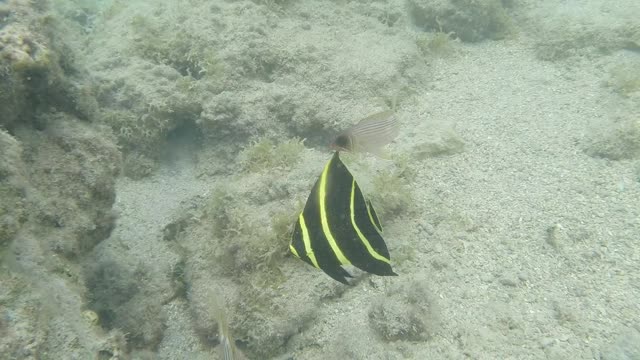Premium Only Content

Diving Under Water Along Side Koi Fishes
See this Diving Under Water Along Side Koi Fishes , In the deep ocean, the waters extend far below the epipelagic zone, and support very different types of pelagic fishes adapted to living in these deeper zones.
In deep water, marine snow is a continuous shower of mostly organic detritus falling from the upper layers of the water column. Its origin lies in activities within the productive photic zone. Marine snow includes dead or dying plankton, protists (diatoms), fecal matter, sand, soot and other inorganic dust. The "snowflakes" grow over time and may reach several centimetres in diameter, travelling for weeks before reaching the ocean floor.
However, most organic components of marine snow are consumed by microbes, zooplankton and other filter-feeding animals within the first 1,000 metres of their journey, that is, within the epipelagic zone. In this way marine snow may be considered the foundation of deep-sea mesopelagic and benthic ecosystems: As sunlight cannot reach them, deep-sea organisms rely heavily on marine snow as an energy source.
Some deep-sea pelagic groups, such as the lanternfish, ridgehead, marine hatchetfish, and lightfish families are sometimes termed pseudoceanic because, rather than having an even distribution in open water, they occur in significantly higher abundances around structural oases, notably seamounts and over continental slopes. The phenomenon is explained by the likewise abundance of prey species which are also attracted to the structures.
Hydrostatic pressure increases by 1 atmosphere for every 10m in depth.Deep-sea organisms have the same pressure within their bodies as is exerted on them from the outside, so they are not crushed by the extreme pressure. Their high internal pressure, however, results in the reduced fluidity of their membranes because molecules are squeezed together.
Fluidity in cell membranes increases efficiency of biological functions, most importantly the production of proteins, so organisms have adapted to this circumstance by increasing the proportion of unsaturated fatty acids in the lipids of the cell membranes. In addition to differences in internal pressure, these organisms have developed a different balance between their metabolic reactions from those organisms that live in the epipelagic zone.
David Wharton, author of Life at the Limits: Organisms in Extreme Environments, notes "Biochemical reactions are accompanied by changes in volume. If a reaction results in an increase in volume, it will be inhibited by pressure, whereas, if it is associated with a decrease in volume, it will be enhanced".This means that their metabolic processes must ultimately decrease the volume of the organism to some degree.
-
 10:37
10:37
Russell Brand
2 days agoHow is this even allowed?
121K771 -
 1:37:26
1:37:26
Real Coffee With Scott Adams
4 hours agoEpisode 2701 CWSA 12/26/24
60.6K72 -
 2:58:58
2:58:58
Wendy Bell Radio
9 hours ago9 Steps Ahead
96.4K125 -
 2:03:46
2:03:46
LFA TV
18 hours agoTIME FOR A NEW SPEAKER! | LIVE FROM AMERICA 12.26.24 11am EST
49.3K35 -
 1:40:22
1:40:22
Game On!
15 hours ago $5.03 earnedNFL Thursday Night Football Seahawks at Bears EXPERT Picks!
45.1K9 -
 1:50:54
1:50:54
xBuRnTx
4 hours agoWho's Ready for New Years!
33.5K1 -
 12:09
12:09
Tactical Advisor
17 hours agoSmith & Wesson Shield Plus Carry Comp
27.3K2 -
 4:35:25
4:35:25
Father Russell
10 hours agoDelta Force | Not A Woman? | Mad Martigan Time
64.7K5 -
 3:29:42
3:29:42
BrookieMonster
17 hours ago $44.84 earnedChristmas Stream: Marvel Rivals with CallmeSeags 🎄
183K13 -
 LIVE
LIVE
TheSaf3Hav3n
4 days ago| RUMBLES FIRST SUBATHON IS HERE!!! | DAY 4 |
248 watching